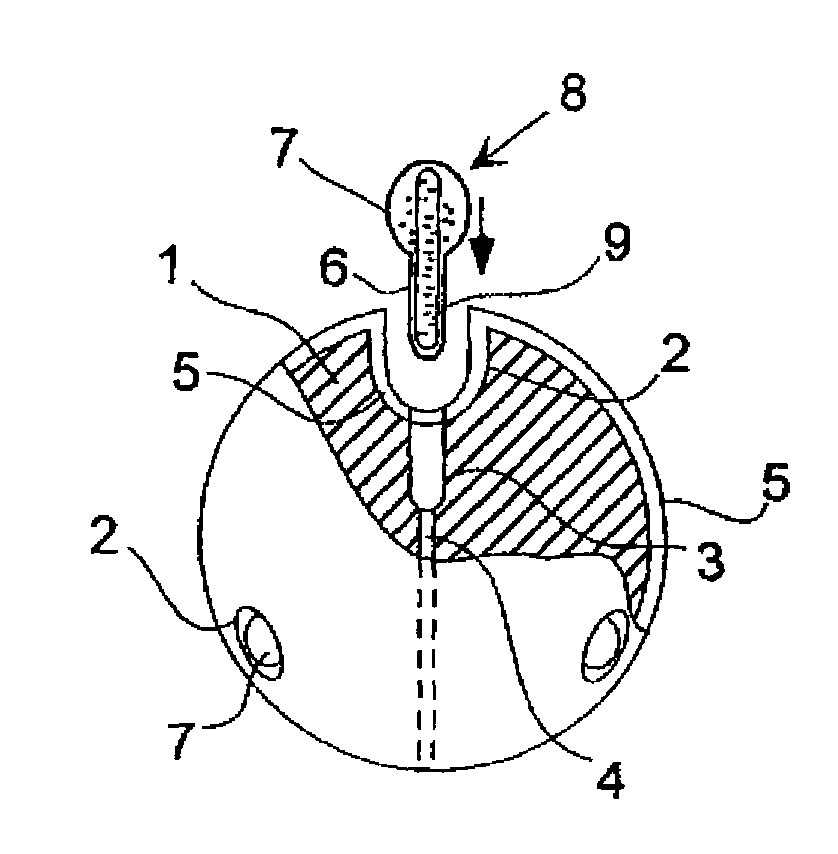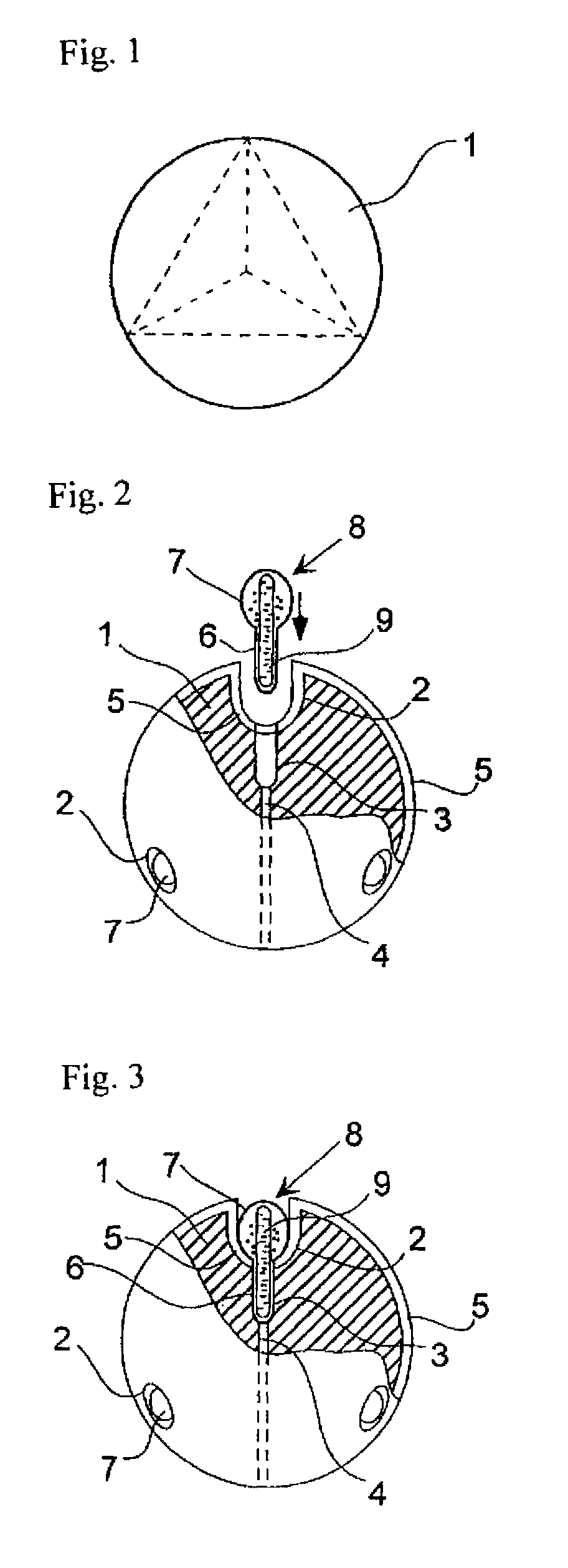Light emitting golf ball
a golf ball and light-emitting technology, applied in golf balls, non-inflatable balls, sport apparatus, etc., can solve the problems of golf balls that cannot be replaced with other lights, golf balls cannot be readily found or lost, and golf balls that cannot be emitted, so as to achieve the effect of not deteriorating the flying performance and maintaining the ball balan
- Summary
- Abstract
- Description
- Claims
- Application Information
AI Technical Summary
Benefits of technology
Problems solved by technology
Method used
Image
Examples
Embodiment Construction
[0015]A light-emitting golf ball according to an embodiment of the present invention will now be described in detail with reference to the accompanying drawings. FIG. 2 shows the light-emitting golf ball of the present invention. Chemical light-emitting bodies 8 have a length of 18 mm. Cylindrical portions 6 have a diameter of 3 mm and a length of 9 mm. Light-emitting portions 7 are egg-shaped and have a maximum diameter of 8.0 mm and a length of 9 mm. Light-emitting bodies have a thickness of 0.3 to 0.4 mm and are blow-molded from polyethylene. Sealed glass tubes having a diameter of 2.2 mm, a length of 16 mm, and a thickness of 0.1 mm are placed in these vessels. The sealed glass vessels 9 contain dibutyl phthalate, bis(2,4,5-trichloro-6-carboisopentyloxyphenyl) oxalate (hereinafter referred to as CPPO), and 1-chloro-9,10-bis(phenylethynyl) anthracene dissolved in dibutyl phthalate. A portion of CPPO is present in a solid state. This mixture can be readily prepared by the followin...
PUM
 Login to View More
Login to View More Abstract
Description
Claims
Application Information
 Login to View More
Login to View More - R&D
- Intellectual Property
- Life Sciences
- Materials
- Tech Scout
- Unparalleled Data Quality
- Higher Quality Content
- 60% Fewer Hallucinations
Browse by: Latest US Patents, China's latest patents, Technical Efficacy Thesaurus, Application Domain, Technology Topic, Popular Technical Reports.
© 2025 PatSnap. All rights reserved.Legal|Privacy policy|Modern Slavery Act Transparency Statement|Sitemap|About US| Contact US: help@patsnap.com


